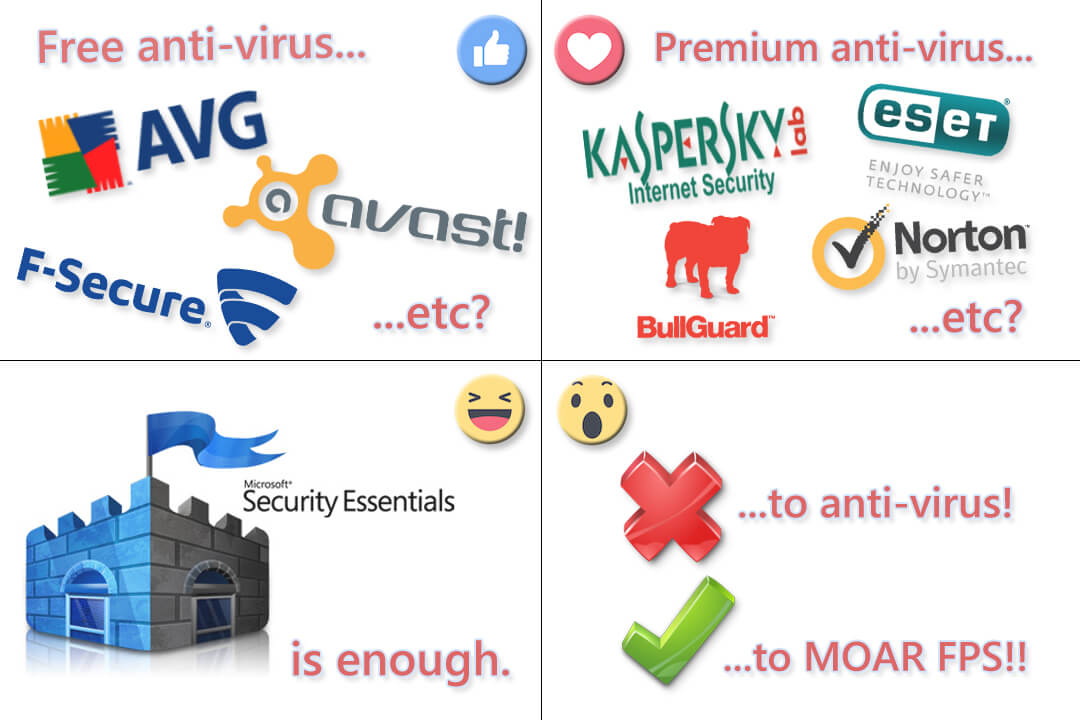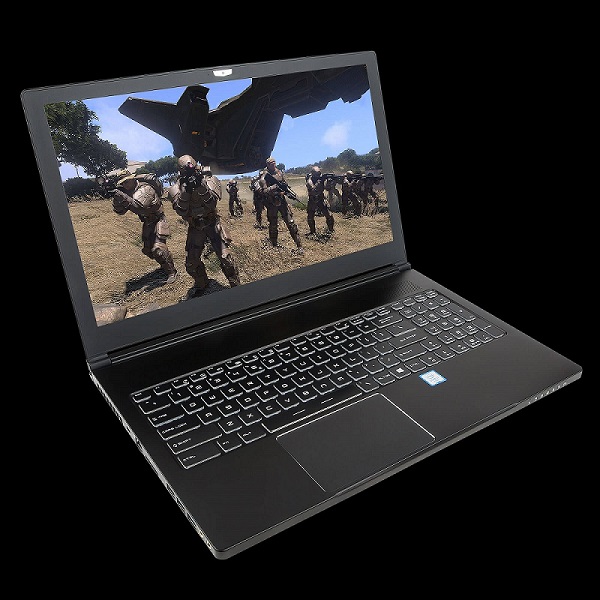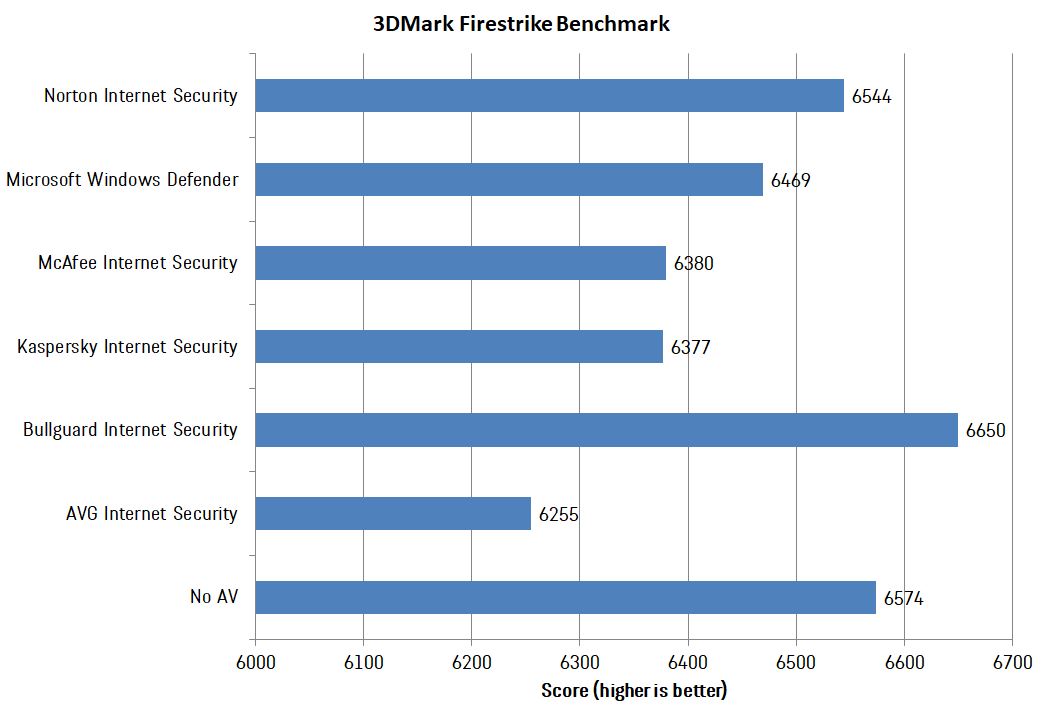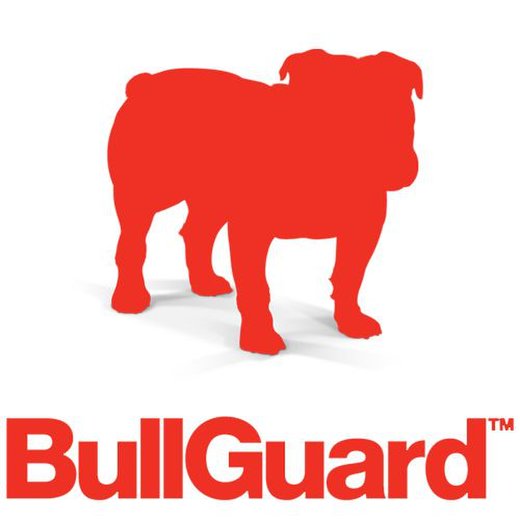Last month we ran a poll on our Facebook and Twitter accounts asking our followers which class of antivirus product they prefer to use. Of the 857 responders, 39% choose a free AV product, 26% use a paid-for AV product, 19% rely purely on the security built into Windows and 16% of users disable all AV in the pursuit of the highest possible frames-per-second.

This got us thinking, what impact does your choice of AV actually have on gaming performance, if any?
After a quick Google search returned no relevant results, we decided to do some testing in order to find out. To be extremely clear from the outset, we didn’t want this piece to become a lengthy dialogue about how effective each AV product is at stopping malware and other nasties – there are plenty of other 3rd party labs who perform such testing in far more depth than we would be willing or able to replicate. For this blog, we are purely interested in the relative effects on 3D performance of each AV product.
The test rig:
For our test we wanted to use a real user’s system with the sort of memory-resident software load and application set most of us endure on a day-to-day basis. We just didn’t feel much value would be derived from running tests on a clean installation of Windows, nor on a £5,000 Core i9 powerhouse when that kind of hardware nor gaming environment is very representative of a real PC. We therefore separated one of our team members begrudgingly from his work laptop and tested various AV products, comparing their impact on 3D performance. The spec of that laptop (a Chillblast Samurai 15.6” in case you were wondering), is as follows;
Intel Core i7 6700HQ Quad Core CPU
16GB DDR4 2400MHz Memory
GeForce GTX 970M 3GB Video Card
1TB Samsung 850 EVO SSD
Windows 10 Home [1803]

The Tests
We subjected the laptop to a total of six different security products, namely Norton Internet Security, McAfee Internet Security, Kaspersky Internet Security, BullGuard Internet Security, AVG Internet Security and Windows Defender – the free protection built into Windows 10. We also threw caution to the wind and did a control test with the system running with no protection whatsoever. Before and after each installation was complete we restored a “clean” Windows image to the pre-testing state to ensure any residual AV software left after one test couldn’t impact the next.
Benchmarking Software
Our first benchmark needs little introduction – 3DMark in its various guises has been the go-to 3D performance benchmark for two decades and professional overclockers and enthusiasts alike spend an inordinate amount of time chasing world records in each test. We selected the endlessly popular Fire Strike test, which is a demanding DirectX 11-powered 3D benchmark that spits out a reliable and consistently repeatable score at the end. To ensure a fair and consistent score was produced for each AV product we ran each test three times, taking an average of the results.

We followed this synthetic benchmark with a second test, this time using F1 2017. This popular racing game from Codemasters has a beautifully well-optimised 3D engine and incorporates a useful benchmark function within its graphical settings submenu. We’ve found it to be a highly reliable and reproducible metric for real-world 3D performance. Once again we performed three runs, averaging each result.

Over the course of the test we left a realistic number of applications memory resident or active in the background, namely the STEAM client, skype, Microsoft Excel and a three browser tabs within Chrome. We feel this is a fair representation of how most people use their systems in real life where shutting everything down for a quick 30 minute blast of PUBG over your lunchbreak is neither desirable nor realistic.
The Results

In 3Dmark Fire Strike the fastest configuration of all was seen when running with BullGuard Internet Security, with it showing a slight FPS boost over even the system with no AV installed. We attribute this to the built in “Game Booster” feature optimising the Windows power profile and/or memory usage of background apps. It’s interesting to see Norton (which has historically had a rather poor reputation for being a resource hog) and Windows Defender also doing a pretty solid job too, not really costing the user much performance vs. running with no AV at all. McAfee and Kaspersky had a heavier impact on the performance, with AVG (the market leader) showing the biggest drop of all.

In F1 2017, the system again shows a spread of results, with performance depending on the AV product installed. There’s not really any noticeable impact in performance of having BullGuard, Norton or Windows Defender installed compared to running without protection, with the BullGuard installation once again actually showing the fastest frame rate recorded – presumably down to that power state / memory optimisation delivered by the Game Booster functionality, which the program enables by default. Once again McAffee, Kaspersky and AVG duke it out for the wooden spoon.
Conclusion
In conclusion, running your Windows PC with Antivirus doesn’t have to impact gaming performance to any noticeable degree; if you choose the correct product. We think it’s fair to say that BullGuard Internet Security, Windows Defender and Norton Internet Security have little to no noticeable impact on your frame rate. AVG, Kaspersky and McAfee each impart a small but noticeable performance penalty for the protection they afford. Those wanting the best possible performance from their PC would be demonstrably best served by choosing BullGuard, based on the results of our testing. The firm’s Game Booster feature does seem to actually do something for performance, by what means exactly we may explore in a future blog post!
Fastest AV for Gamers:

Highly Commended:






